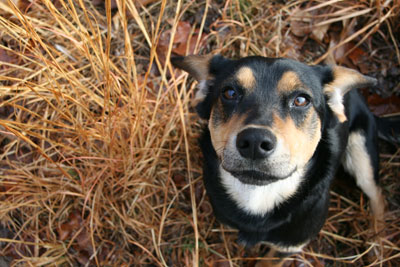All Nonfiction
- Bullying
- Books
- Academic
- Author Interviews
- Celebrity interviews
- College Articles
- College Essays
- Educator of the Year
- Heroes
- Interviews
- Memoir
- Personal Experience
- Sports
- Travel & Culture
All Opinions
- Bullying
- Current Events / Politics
- Discrimination
- Drugs / Alcohol / Smoking
- Entertainment / Celebrities
- Environment
- Love / Relationships
- Movies / Music / TV
- Pop Culture / Trends
- School / College
- Social Issues / Civics
- Spirituality / Religion
- Sports / Hobbies
All Hot Topics
- Bullying
- Community Service
- Environment
- Health
- Letters to the Editor
- Pride & Prejudice
- What Matters
- Back
Summer Guide
- Program Links
- Program Reviews
- Back
College Guide
- College Links
- College Reviews
- College Essays
- College Articles
- Back
Treat Your Pet the Right Way
As all pet owners know, it’s not always so easy to say no. It’s “the look” that gets us. The adorable big eyes, the fuzzy little paws, the wagging tail...the wispy whiskers! After a look like that, pet owners can’t help but to give in and give their four legged furry friend an extra treat. But they really shouldn’t, and by now, they should know why.
Obesity - one of the most common preventable diseases in North America[1]- is not exclusive to humans. In Fact, the Association For Pet Obesity Prevention (APOP) found that just within the last year, 59% of cats and 54% of dogs in the U.S are battling obesity.[2] That’s approximately 41.9 million dogs and 50.5 million cats![3]
Unfortunately, many people breeze over articles pertaining to pet health and wellness because they believe their fido is a perfectly normal weight. Either that, or they just don’t seem to be bothered by their kitty’s extra pudge under the belly. They say “it's just more to love!” But here’s where it gets serious. Likewise to human obesity, pet obesity has its fair share of risks and consequences.
Imagine a few life damaging conditions and diseases a human can get in result from having obesity - cancers, diabetes, high blood pressure, osteoarthritis[4]- it should be no surprise that obese pets can develop these conditions too. Literally, the exact. Same. Ones. Their fluffy coat of an exterior does not miraculously expel them from the horrors of everyday diseases, as much as many owners would like to believe. Also we can not forgot to mention the humongous costs it takes to medicate ailments of this degree, for humans and pets alike! But how on earth are they letting their pet get to such a severe condition to begin with?
APOP founder and veterinarian, Dr. Erwin Ward expresses that “obesity continues to be on of the greatest health threats to dogs and cats and kills millions of pets prematurely”.[5] This mere statement is exactly what’s flying over the heads of millions of oblivious pet owners. Now, as far as this may seem from animal abuse it's still on the lines of neglecting and not letting your pet live as a full life in healthy conditions as it can, and that’s utterly heart breaking. Something has to change.
The real problem lies within the minds of unaware pet owners. Many fail to acknowledge that there is a problem in the first place. Owners that compare their furry companions to the images they see online or to the pets they see around is not an accurate comparison because in most cases, the pets they see are still “consistently too heavy”[6] and that keeps them from having a good picture of what's healthy.
It’s too bad that we cannot just force wanna-be pet owners to attend an educational seminar about the huge responsibility it is to own a pet or make the adopting/ buying a pet process identical to the adoption process for humans. I mean there are just too many cats and dogs in the world. The American Society for the Prevention of Cruelty to Animals (ASPCA) found that about 860,000 cats and 670,000 dogs are put down through euthanasia every year.[7] If it becomes anymore of a hassle to own/adopt a pet, then it's more likely less people will be interested in getting one in the first place. And that means more cats and dogs left out alone in the world with no human companions and quality of life (for both the pet and human) dulled.
So what’s the solution? Well, the biggest thing the can be done right now, is becoming more educated on pet health and wellness. And that can be as simple as taking a tiny little trip to the vet. Your pet health care provider will not only be able to check to see if your pet is a healthy weight, but they will also be able to recommend certain formulated dietary plans and weight loss activities to those who do need the help. Big shocker...I know.
Pet owners should really have a good grip on what a healthy weight is for their cat or dog. The more people that can recognize what's a healthy looking pet from not, the better and overall awareness it can bring. Once pet owners get a better understanding, the sooner they can start applying their knowledge and taking action to preventing pet obesity.
So the next time you get faced with “the look”, just remember that saying no and not giving them an extra doesn’t mean that you don’t love your pet. If anything in the long run, it means that you love them even more!
[1] Robin Downing, DVM, CVPP, CCRP, & DAAPM, Obesity in Dogs, VCA. (December 13, 2013).
[2] APOP, U.S Pets Gets Fatter, Owners Disagree with Veterinarians on Nutritional Issues, APOP.
(accessed March 21, 2017).
[3] APOP, U.S Pets Gets Fatter
[4] CDC, Adult Obesity Causes & Consequences, CDC. (accessed March 22, 2017).
[5] APOP, U.S Pets Get Fatter
[6] Downing, Obesity in dogs
[7] ASPCA, Pet Statistics, ASPCA. (accessed March 23, 2017).

Similar Articles
JOIN THE DISCUSSION
This article has 0 comments.
